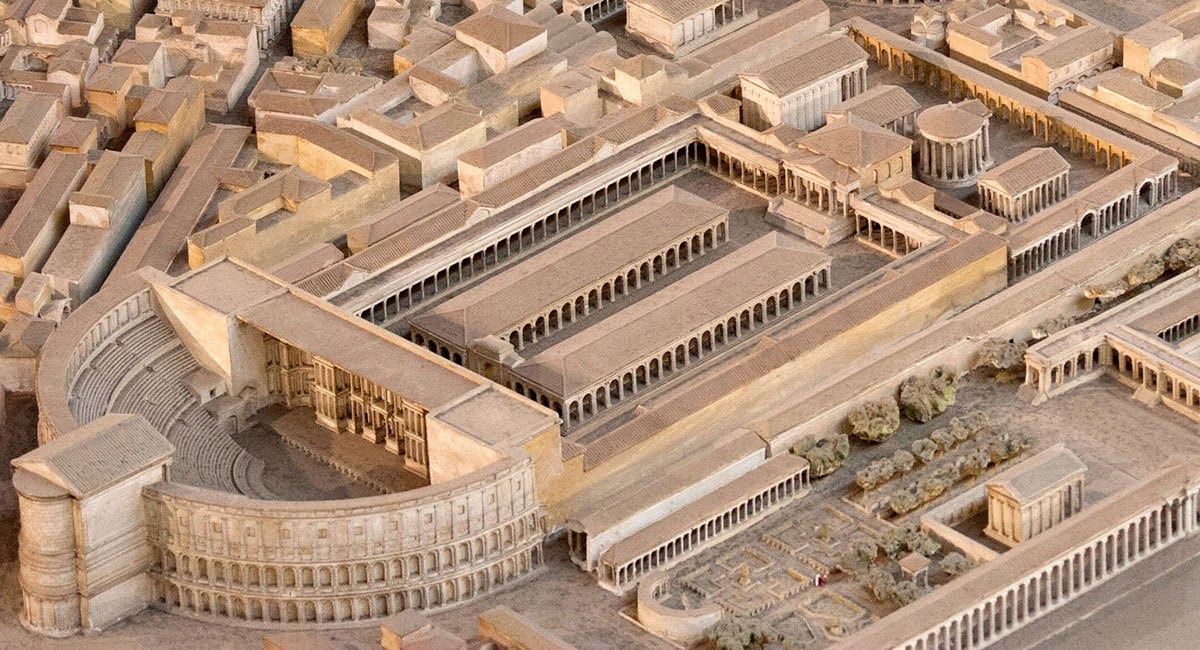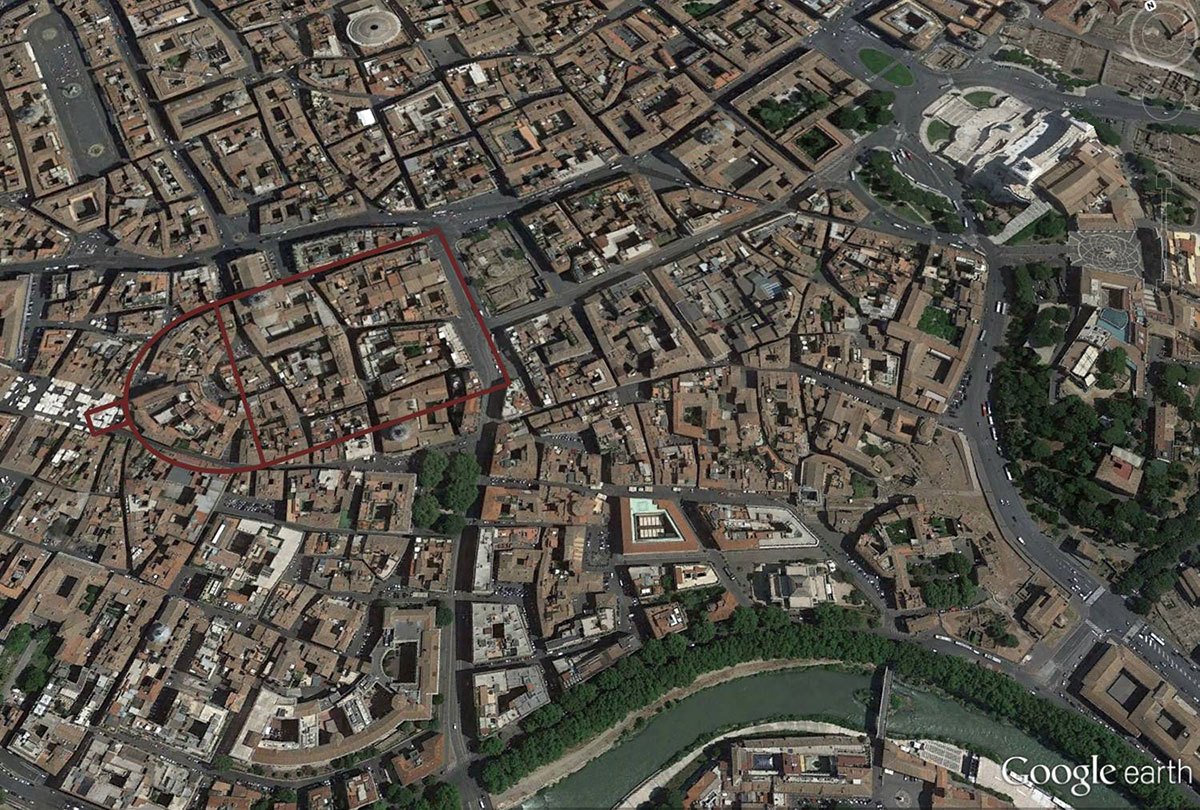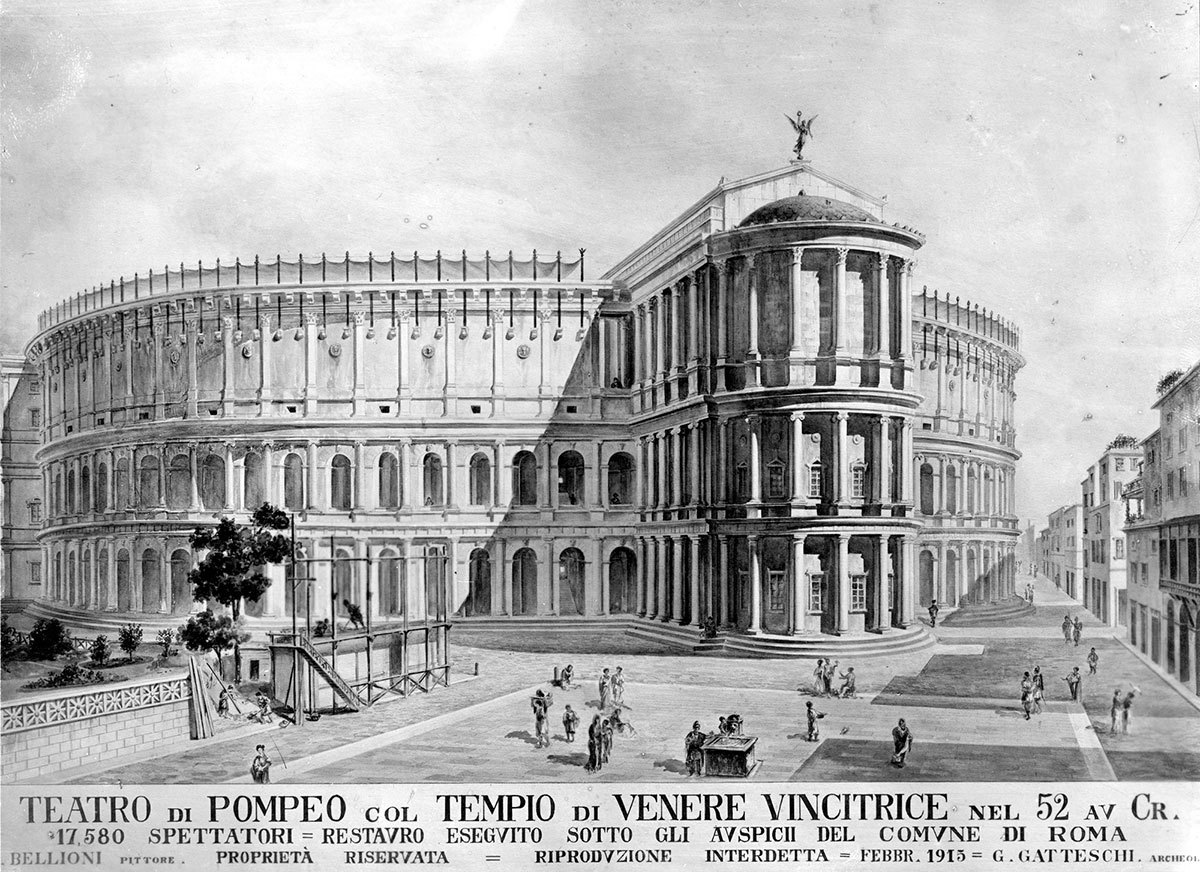Roman Building Projects
A Marker of Social Organization and Military Success
Republic
Theater of Pompey
Source: Teatro di Pompeo con Tempio di Venere vincitrice, Gatteschi collection of Roman architecture and reconstructive drawings of Emperial Rome, 1900-1935, dhc.aarome.org/collections/gatteschi
- The first stone theatre erected in Rome
- The capacity was approximately 10,000, perhaps more; ancient sources claimed that the theater seated 40,000
- Commissioned by Pompeius Magnus in 55 BC and dedicated in 52 BC, to celebrate his conquest of the eastern Mediterranean, 14 statues represented the 14 conquered nations
- To get around the censors’ prohibition against building a permanent theater, Pompeius had a temple built inside the theater; it was dedicated to Venus Victrix
- Behind the theater, there was a large portico surrounding a garden at the end of which was a curia for meetings of the senate; it was here that Caesar was murdered in front of the statue of Pompeius
- Augustus restored the theater at great expense
- Augustus moved the statue of Pompeius from the curia to the theater itself
- Tiberius restored the theater after a fire in 21 AD, the work was completed under Caligula
- The outside of the theater was supported by three levels of arches; with engaged Doric columns adorning the first floor, Ionic columns the second floor and Corinthian columns the third; the columns were of red granite
Political and military implications
- Built by Pompeius to memorialize his victories in the East; he conquered 14 countries and added them to the Roman Empire; these victories were represented by a confiscated work of art from each city
- The Porticus behind the theater was the first public park in ancient Rome
- The project was funded by spoils from Pompeius’ eastern conquests



